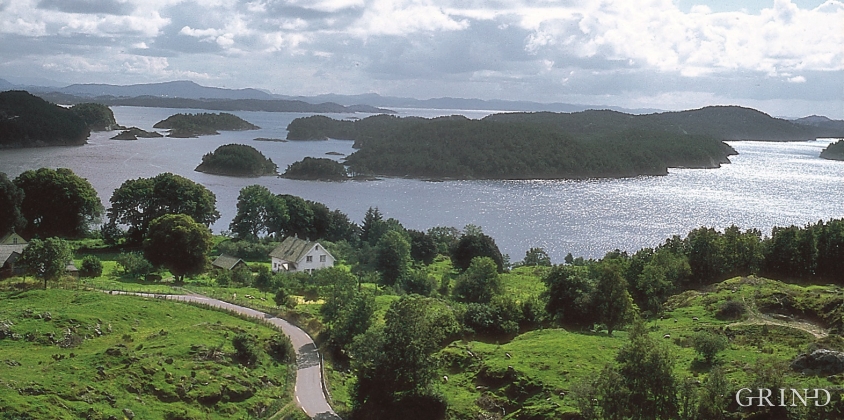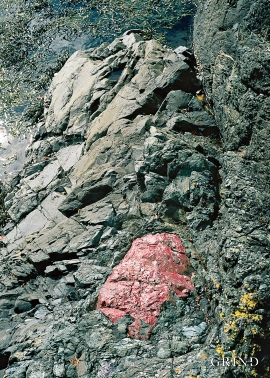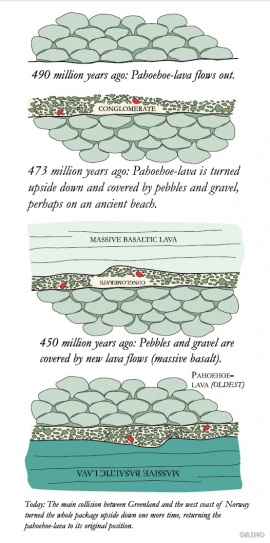Published: 21.07.2015 | Author: Haakon Fossen
PAHOEHOE-LAVA AND JASPER
At Flintaneset by Finnåsvika, in the centre of the municipality, we find the most beautiful and best preserved igneous rocks in western Norway. We must go to Hawaii or Island to find as fine structures as at Bømlo.
At the end of the 1800s, Bergenser and geologist Hans Reusch came across these strange elliptical structures in the bedrock at Flintaneset. It would take several generations before anyone understood that they were transects through roughly 495 million year old basaltic lava streams, where the lava had solidified and formed rigid pipe-shaped forms, so-called "pahoehoe-lava". During the volcanic activity the columns were firm on the outside, but filled with glowing lava. When the pressure became too great, a new pipe-shaped column broke out from the old. The lava grew into a network of these columns. Most solidified while filled with lava, but in some cases there was an elongated hollow space where the lava once had flowed.
In transects of these one can see several elliptical structures, dominated by small holes, especially at the tops. The holes were created by gas cavities that hardened when the lava solidified while they still were on their way up. That one finds most holes in the tops of the structures is evidence that the bedrock today lies in the same orientation as it did when the structures were formed, and not upside down, as rock layers often do after they have been folded. Similarly, the long direction of the columns tells that the lava flowed in a north-south direction. They often have a fine-grained stripe around them that shows that they have cooled most quickly along the edge. Along the road by Finnås vicarage we can see similar structures. These are smaller and are called "pillow lavas". They are formed when the basaltic lava runs out into water and gets cooled extremely quickly.
Along the steep cliff toward the sea on the east side of the prominence one finds metre-thick conglomerate that contains stones of the basaltic rock types at Flintaneset. In addition, one finds quite beautiful fragments of blood-red jasper, which must not be destroyed by a hammer! There are up to 40 centimetre-large stones that have been deposited on a 473 million year-old beach. Conglomerate separates the pahoehoe-lava at Flintaneset from the 20 million-year younger, more massive basaltic lava flows. These flows and the conglomerate lie under the pahoehoe- lava today.
- Andersen, T. B.; Furnes, H. Excursion guide to central Bømlo (day 5) and Stord (day 6) for G-301 students, Bergen, Oslo and Tromsø. 1–28
- Nordås, J. A. 1985. Volcanological and geochemical study of the lower palaeozoic Lykling ophiolithic complex and Siggjo complex, Central Bømlo, Western Norway. Cand.real avhandl.,UiB.
- Reusch, H. 1888. Bømmeløen og Karmøen med omgivelser geologisk beskrevne. Den geologiske undersøkelse.







